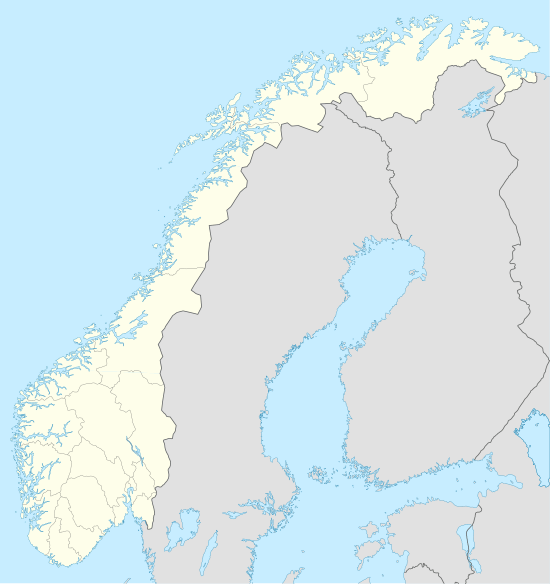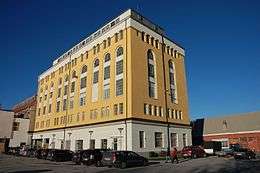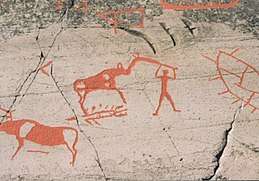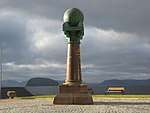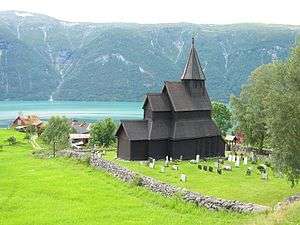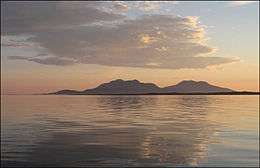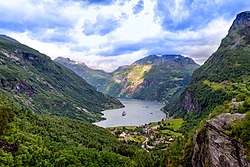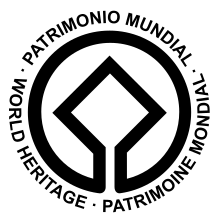List of World Heritage sites in Norway
The United Nations Educational, Scientific and Cultural Organization (UNESCO) World Heritage sites are places of importance to cultural or natural heritage as described in the UNESCO World Heritage Convention, established in 1972.[1] The Kingdom of Norway accepted the convention on 12 May 1977, making its historical sites eligible for inclusion on the list. As of 2017, there are eight World Heritage sites in Norway, including seven cultural sites and one natural site.[2]
Norway's first two sites, Urnes Stave Church and Bryggen, were inscribed on the list at the 3rd session of the World Heritage Committee, held in Cairo and Luxor, Egypt in 1979.[3] The latest inscription, Rjukan–Notodden Industrial Heritage Site, was added to the list in 2015.[4]
In addition to its World Heritage sites, Norway also maintains five properties on its tentative list.[5]
List of sites
The table is sortable by column by clicking on the ![]()
- Site; named after the World Heritage Committee's official designation[6]
- Location; at city, regional, or provincial level and geocoordinates
- Criteria; as defined by the World Heritage Committee[7]
- Area; in hectares and acres. If available, the size of the buffer zone has been noted as well. A lack of value implies that no data has been published by UNESCO
- Year; during which the site was inscribed to the World Heritage List
- Description; brief information about the site, including reasons for qualifying as an endangered site, if applicable
Tentative list
In addition to sites inscribed on the World Heritage list, member states can maintain a list of tentative sites that they may consider for nomination. Nominations for the World Heritage list are only accepted if the site was previously listed on the tentative list.[16] As of 2017, Norway lists five properties on its tentative list:[5]
- Islands of Jan Mayen and Bouvet as parts of a serial transnational nomination of the Mid-Atlantic Ridge system
- Svalbard Archipelago
- The Laponian Area - Tysfjord, the fjord of Hellemobotn and Rago (extension)
- The Lofoten islands
- Viking Monuments and Sites / Vestfold Ship Burials and Hyllestad Quernstone Quarries
See also
References
- ↑ "The World Heritage Convention". UNESCO. Retrieved 21 September 2010.
- ↑ "Norway". UNESCO. Retrieved 14 July 2017.
- ↑ "Report of the 3rd Session of the Committee". UNESCO. Retrieved 14 July 2017.
- ↑ "Decision : 39 COM 8B.29". UNESCO. Retrieved 14 July 2017.
- 1 2 "Tentative List – Norway". UNESCO. Retrieved 14 July 2017.
- ↑ "World Heritage List". UNESCO. Retrieved 28 May 2010.
- ↑ "The Criteria for Selection". UNESCO. Retrieved 10 September 2011.
- ↑ "Bryggen". UNESCO. Retrieved 14 July 2017.
- ↑ "Rjukan–Notodden Industrial Heritage Site". UNESCO. Retrieved 14 July 2017.
- ↑ "Rock Art of Alta". UNESCO. Retrieved 14 July 2017.
- ↑ "Røros Mining Town and the Circumference". UNESCO. Retrieved 14 July 2017.
- ↑ "Struve Geodetic Arc". UNESCO. Retrieved 14 July 2017.
- ↑ "Urnes Stave Church". UNESCO. Retrieved 14 July 2017.
- ↑ "Vegaøyan -- The Vega Archipelago". UNESCO. Retrieved 14 July 2017.
- ↑ "West Norwegian Fjords – Geirangerfjord and Nærøyfjord". UNESCO. Retrieved 14 July 2017.
- ↑ "Tentative Lists". UNESCO. Retrieved 7 October 2010.
